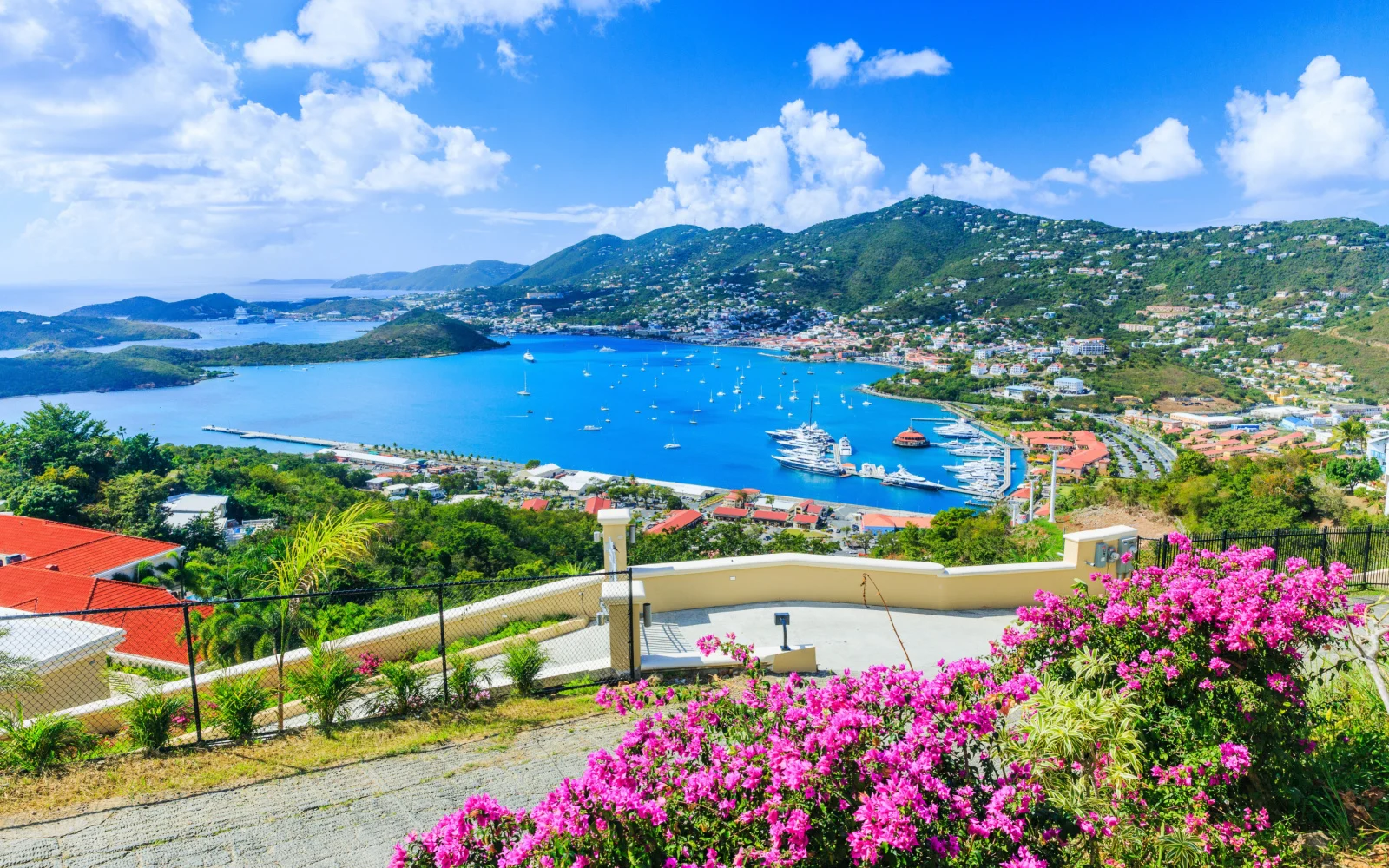Is St. Thomas safe to visit in 2025?
St. Thomas is part of the U.S. Virgin Islands, a U.S. territory and a very popular Caribbean vacation destination. The U.S. Virgin Islands welcomes over two million tourists each year, with many of those visitors spending at least some time on St. Thomas.
When you visit St. Thomas, the natural beauty is one of the island’s main attractions. But if you want to make this your base during your Caribbean vacation, it’s worth learning a bit more about the island, such as any safety concerns you may encounter.
We’ll show you everything you need to know about visiting this island safely, including crime statistics. Keep reading to prepare for your upcoming vacation!
Is St. Thomas Safe to Visit in 2025?
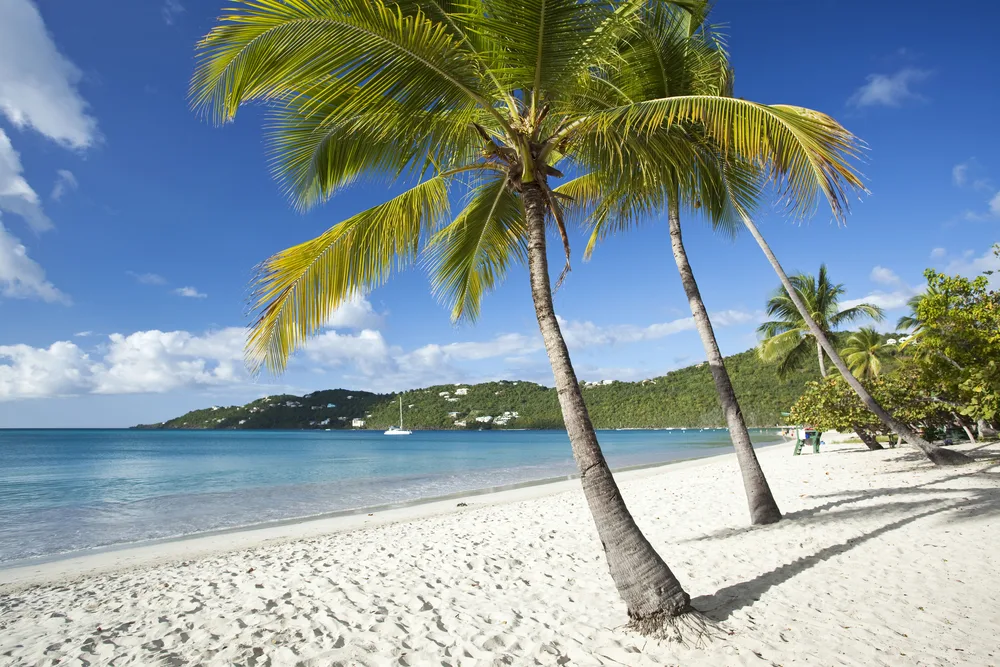
Sasha Buzko/Shutterstock
Yes. St. Thomas is very safe to visit, which is why it receives so many visitors each year! When researching the island, you may come across information that states it has a high crime rate.
However, most crime on the island affects locals, not visitors. A good place to start researching the safety of the island is to look into the safety of the U.S. Virgin Islands as a whole.
Problems that affect the whole territory are likely going to affect St. Thomas as well. The good news is that most countries judge that the U.S. Virgin Islands are safe to visit.
The New Zealand government doesn’t even issue a special travel advisory for the U.S. Virgin Islands!
If no special advice is needed, it’s safe to assume that a government judges that an island is safe to visit. However, just because a place is safe to visit doesn’t mean that it has no problems. St. Thomas does have an elevated crime rate.
Common crimes include:
- Petty theft
- Mugging
- Robbery
- Gang violence
The reason why countries still issue a low level travel advisory for St. Thomas despite the presence of these issues is that these problems don’t frequently affect visitors.
Still, it’s a good idea to be aware of these issues so you can prepare for them before your trip. Many visitors come to the island to partake in water sports and adventure activities such as kayaking, snorkeling, or even ziplining.
Before trying out any new activity, it’s a good idea to take the right safety precautions. If you’re booking with a tour operator, research the operator ahead of time to see if they take the right precautions to protect their guests.
The pristine waters are perfect for swimming, but don’t let the calm surface deceive you. The waters of the Caribbean Sea can hide dangerous riptides or currents.
Always follow any posted signs or local advice on when it is safe to swim or not. St. Thomas, like many Caribbean islands, experiences hurricanes.
The Irish government warns its citizens to be careful when traveling to the U.S. Virgin Islands between July and October, which is hurricane season. Avoid August and September in particular as that is when hurricane season peaks.
If you decide to risk it and travel during hurricane season (which is when accommodation is cheapest) make sure that you take precautions to protect yourself.
Carefully monitor the weather and hurricane predictions on reputable sites such as the National Hurricane Center. If a hurricane is predicted, follow government advice and try to evacuate if you can — once a storm strikes, all flights will be grounded.
Crime in St. Thomas
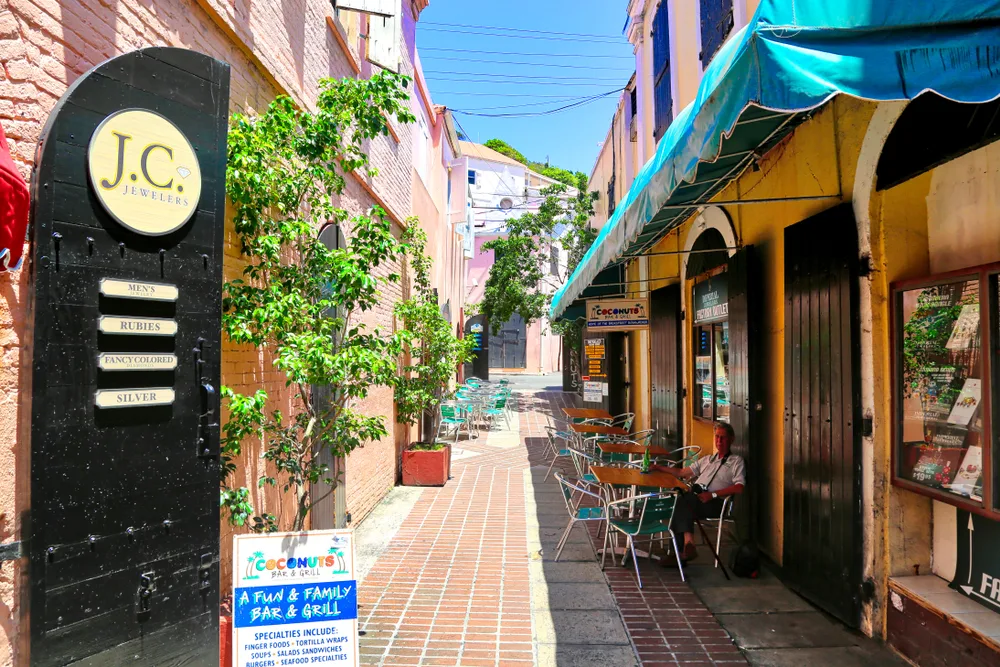
Charlotte Amalie, U.S. Virgin Islands-20 May, 2017: Charlotte Amalie historic center and shopping district/eskystudio/Shutterstock
Crime is the primary concern for visitors to St. Thomas. It is true that St. Thomas, like the territory of the U.S. Virgin Islands as a whole, has an elevated crime rate. However, crime is primarily a problem that affects the local population.
It’s important to know the reality of what goes on in a destination you are visiting, so you can both take precautions to protect yourself and know what local people are dealing with, without letting it cause fear or panic in your mind.
The FBI offers a breakdown of crime in the U.S. Virgin Islands and separates data for St. Thomas. Keep in mind that the FBI data covers a few surrounding islands as well, such as St. John.
Although St. Thomas is by far the most populous of these islands and has the vast majority of the crimes reported to the FBI bureau, a few of those crimes have occurred on other islands.
According to FBI data, a whopping 36% of crimes that occurred were violent in nature. The most common crime is aggravated assault, which makes up about 26% of total crimes committed on St. Thomas.
The next most common violent crime (and the one most likely to affect tourists) is robbery. The remaining 74% of crimes reported were property crimes.
The most common property crime is theft, which makes up 37% of total crimes committed on the island, followed by burglary. Although this FBI data is from a few years ago, crime patterns on St. Thomas have remained similar since then.
The crime rate is still fairly high, and the rate of violent crimes is still fairly high. You may be wondering why a pristine holiday destination can have such an ugly underbelly.
There are a few reasons why the crime rate is so high. One is that there are many street gangs in towns such as Charlotte Amalie that drive violence.
Most violent incidents occur in cases where victims and perpetrators knew each other, such as domestic violence incidents or fights between rival gangs. Another is that the pandemic took a toll on St. Thomas.
The island relies on tourism and shutting down travel increased poverty and unemployment. These are both social factors that tend to contribute to higher crime rates.
It’s true that St. Thomas has its fair share of problems, including a high crime rate. However, most tourists are fairly insulated from these problems, especially if they take the right precautions to protect themselves.
Petty Theft
The most common crime you will encounter in St. Thomas is petty theft. The Canadian government warns about this crime in its travel advisory for the U.S. Virgin Islands as a whole.
It warns that pickpocketing and bag snatching can occur around areas popular with tourists, such as St. Thomas, and that travelers should be on their guard. One of the most common forms of theft is theft of unattended items.
Thieves take advantage of tourists swimming at the beach and rifle through their bags while they are in the water.
The best way to prevent this form of theft is to leave your valuables in your hotel safe (and irreplaceable jewelry and watches at home). If you don’t have anything to steal, thieves will be stopped in their efforts.
Pickpocketing and bag snatching can happen in the main town of St. Thomas, Charlotte Amalie. Thieves take advantage of the crowds, especially when cruise ships dock, to relieve visitors of their valuables.
Luckily, basic precautions are usually enough to deter pickpockets. Make sure that you don’t leave items unattended when you are in town.
Don’t put items where they will be easy to snatch quickly, such as in the back pocket of your pants or hanging off the back of your chair. Some visitors choose to rent a car to explore St. Thomas.
However, that exposes you to another possible crime, which is theft from vehicles.
If you are driving around the island, avoid leaving valuables in your car, even if you are just stepping out for a few minutes. Thieves operate at gas stations, beach parking lots, and at trailheads they know are popular with tourists.
Robbery
The high violent crime rate rarely affects visitors to St. Thomas. However, robberies are an exception. There have been cases of people being mugged or robbed before.
Since most robberies occur at night, being careful about your movements after dark is one of the first precautions you should take to prevent robberies.
You can walk around at night but avoid isolated areas where it will be hard to call for help such as remote beaches or unlit side streets of Charlotte Amalie. Avoid actions that may single you out as a target.
Robbers often target inebriated visitors, so make sure that you don’t overindulge and then your judgment is impaired.
Don’t flash valuables such as expensive watches and lots of cash that single you out as a lucrative victim. Before booking your accommodation, ask your hotel or rental home host about security precautions. Top hotels have alarms, well-lit exteriors, and private security that deter robbers from targeting guests around the hotel.
If you do get robbed, don’t resist. There have been cases of robbery victims getting assaulted. It’s safer to hand your valuables over and focus on getting away and calling the police.
Avoiding Bad Areas
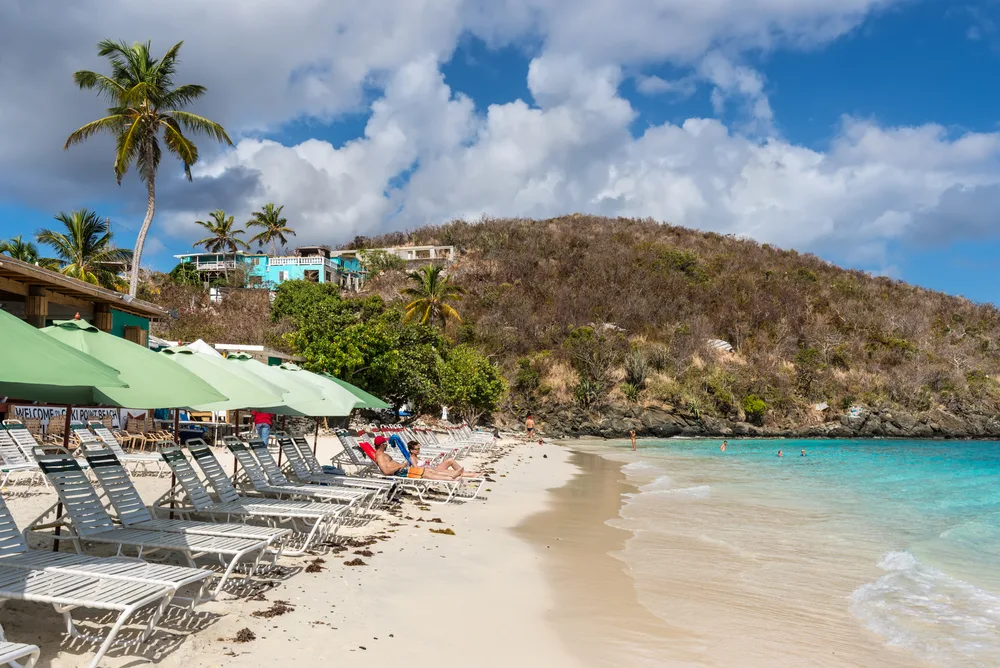
byvalet/Shutterstock
The big towns of St. Thomas have a few areas to avoid, especially after dark. In Charlotte Amalie, avoid back streets and alleyways, especially at night.
Areas such as Frenchman’s Hill and Savan Street have a reputation for being unsafe. Avoid neighborhoods that have “Estate” in the name as these are housing projects that tend to have higher crime rates.
Avoid beaches at night except for private resort beaches. Beaches, especially Coki Beach, tend to be hotspots for illegal activity after dark.
Things to Consider
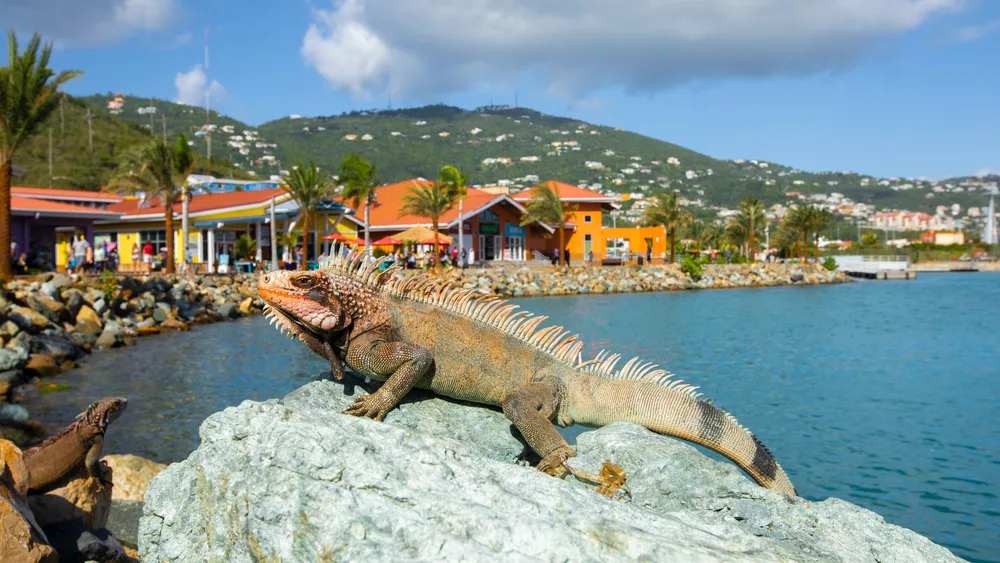
Yuvrajfotos/Shutterstock
Here are a few extra tips to help you stay safe in St. Thomas.
- Wear insect repellent. There are plenty of mosquitoes, and they carry diseases such as dengue fever.
- Make sure you get good travel insurance. The health system on St. Thomas is decent, but you may need to be medically evacuated if something more serious happens, which is a serious expense if you are not insured.
- Respect local customs. Be sure to greet people when you enter their place of business or run into them on the street, as not saying “Good day” is considered extremely rude. Another offense is wearing swimsuits when you’re not on the beach — make sure you cover up outside the beach or your resort.
- People drive on the left. Pay attention to the difference from the rest of the United States when you are crossing the street or driving.
Frequently Asked Questions
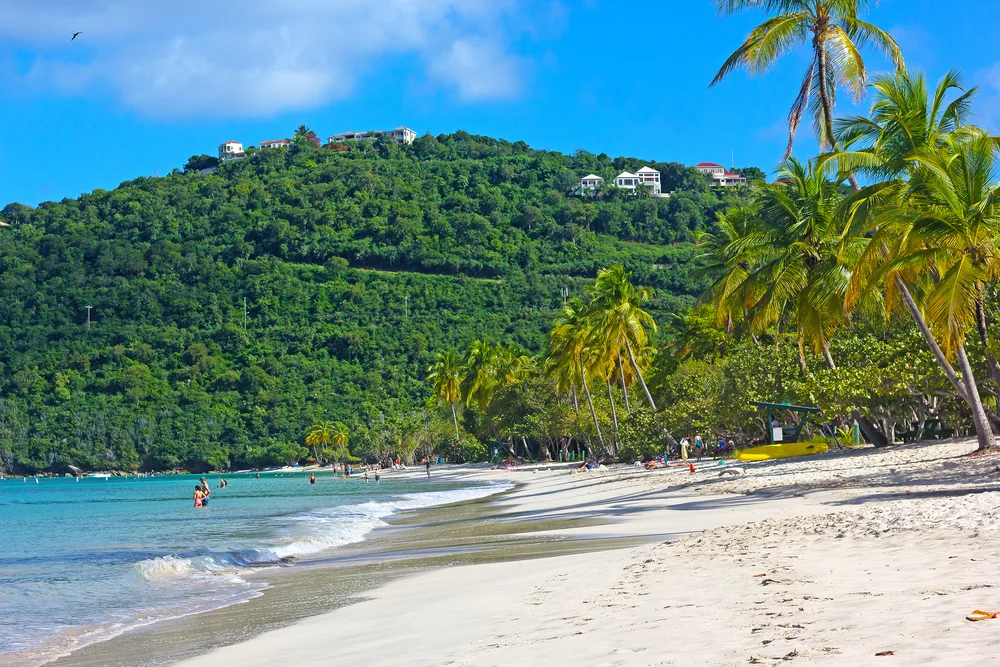
Andrewi Medvedev/Shutterstock
Here are a few common questions you may want answered before visiting St. Thomas.
Is it safe to walk around St. Thomas at night?
Only certain parts of St. Thomas are safe to walk around at night. Avoid poorly lit back streets of major towns and deserted beaches (they may not be as deserted as you think).
Which Virgin Island is the safest?
If you want to visit the Virgin Islands but are concerned about safety, St. John is the best place to go. The tiny island has the lowest crime rate because it also has the lowest population.
So, Is St. Thomas Safe to Visit?
St. Thomas is safe to visit! You should take some precautions to protect yourself from crime, as the high crime rate on the island sometimes affects visitors, but most people that visit have a great time with no negative incidents.
So, with so much to see and do and a mostly safe environment, what are you waiting for — book your trip today and experience for yourself all that St. Thomas has to offer. Happy travels!



